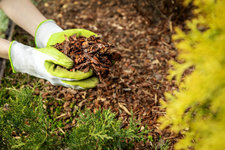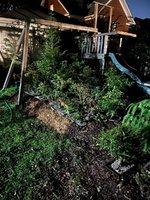First, outside weather is NOT a problem for temperate zone trees. Rain isn't a problem--drainage is the problem for trees in containers. That means when it rains for two or three days you can prop one edge of the pot up on a brick, so the pot slants to one side. That will increase runoff. Other than that quit worrying. Trees have been rained on for a very long, long, long time.
Yes the greenhouse covering is a problem even if it has one end open to air. It promotes mold, wet conditions and general unhealthy plants. Temperate bonsai require a lot of air circulation, as in breezes and actual WIND. That keeps them from developing all manner of bacterial and fungal problems. Get them out from under that cover. They don't need it, it's potentially a problem.
As for winter storage, I simply mulch my temperate maples, elms, oak, bald cypress into garden beds cover them in their pots with five to six inches of shredded hardwood mulch. I make sure the pots have drainage space underneath before I bury the pots. I'm in
USDA Zone 7--which has -17 to -15 C average minimal temperature.
Denmark appears to be a bit warmer than here, but I'm not sure. If it is or even equal to what I have, your trees, including the elm, will be fine with similar treatment.
BTW the open bottom doesn't allow cooling. It actually encourages heating, since warm air rises, cold air sinks. So you're trapping hotter moister air for the plants. Warmer moist environments are hothouses for all kinds of problems.


